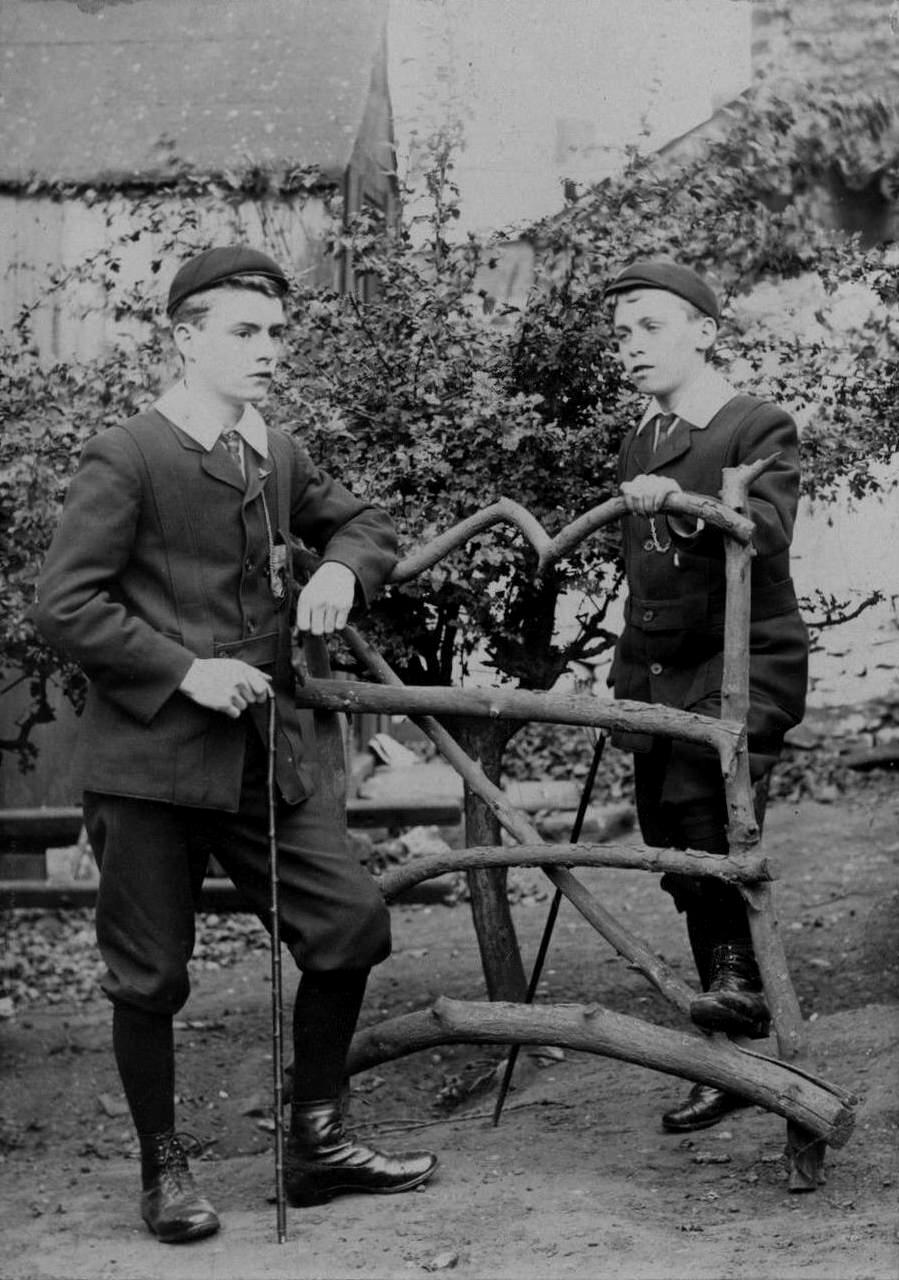

Figure 1.-- This rather basic cabinet card portrait shows George and Ewan McTherson in 1902. The boys look to be about 12-15 years old. We at first assumed they were Ebglish, but given their names, they could well be Scottish. It is difficult to tell and the dealer was in in Canada so it could be either or even might be Canadian. The location is not identified. And unlike most cabinet card portraits the studio is not identified. Also unusual is that is an outdoor rather than a studio setting, although the gate looks like a studio prop. The boys wear matching Norfolk knickers suits with Eton collars. Eton collars were very common at the time for both schoolwear and when dressing up. They have matching caps. The caps were generally associated with schools.
|
|
George and Ewan McTherson (Britain, 1902)
This rather basic cabinet card portrait shows George and Ewan McTherson in 1902. The boys look to be about 12-15 years old. We at first assumed they were English, but given their names, they could well be Scottish. Not only is McTberson Scottish, but Ewan is also a Scottish name. It is difficult to tell and the dealer was in in Canada so it could be either or even might be Canadian. The location is not identified. And unlike most cabinet card portraits the studio is not identified. Also unusual is that is an outdoor rather than a studio setting, although the gate looks like a studio prop. The boys wear matching Norfolk knickers suits with Eton collars. The boys have matching peaked caps. The caps were generally associated with schools. We are not entirely positive, however, that such caps might not have been been purchased with suits and not just for school. Perhaps our British readers will know more. Note how small the peaks (bills) are these caps. That was the style at the turn of the century. Note that the jackets hve both box pleats and the belt. We can not be certain about the pockets. Eton collars were very common at the time for both schoolwear and when dressing up. The jackets are single breasted with small lapels. The caps and suits well could be school uniforms although there is no badge as was common, but not alwats the case. Knicker suits were commonly worn at English schools in the late 19th century. We suspect the same was true at Scottish schools, but have not confirmation at this time. This began to change after the turn-of-the 20th century. The boys both have long black stockings. Long stickings were almost universal in America. This was not the case in Europe, but were still common in England and Scotland as well as northern Euripe. Also nitice the high-top shoes. The boys are shown with walking sticks as if they were going to go for a hike into the country. The suits and shoes look brand new, so perhaps there was a studio nearby.
HBC

Navigate Related HBC Pages:
[Return to the Main ordinary bio page]
[Short hair]
[Peaked caps]
[Eton collar]
[Suit garments
[Norfolk suits]
[Knickers]
[Long stockings ]
[High-top shoes]
Navigate the Boys' Historical Clothing Web Site:
[Introduction]
[Activities]
[Biographies]
[Chronology]
[Clothing styles]
[Countries]
[Bibliographies]
[Contributions]
[Essays]
[FAQs]
[Glossaries]
[Images]
[Links]
[Registration]
[Tools]
[Boys' Clothing Home]
Created: 4:42 AM 2/7/2015
Last edited: 4:43 AM 2/7/2015



